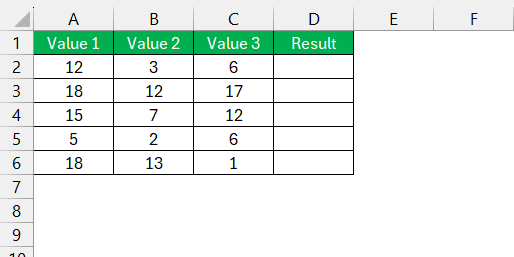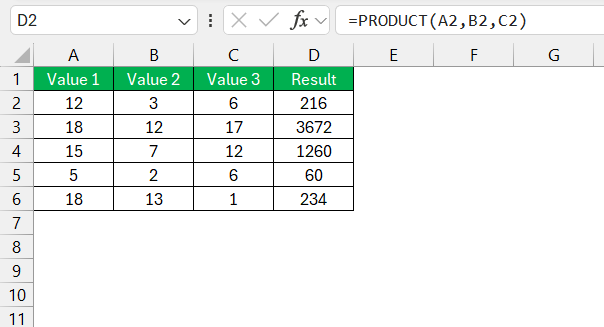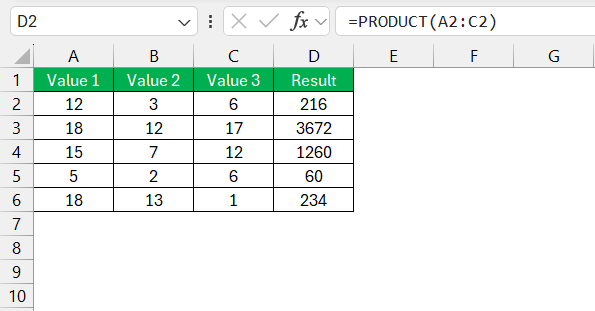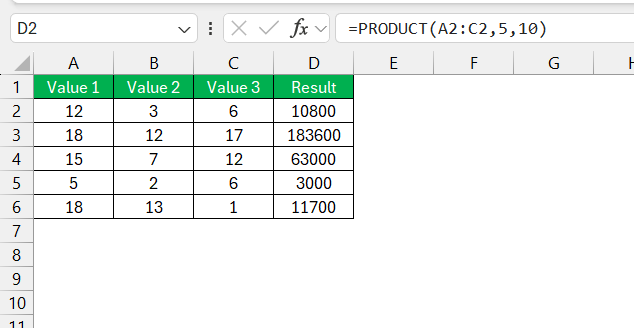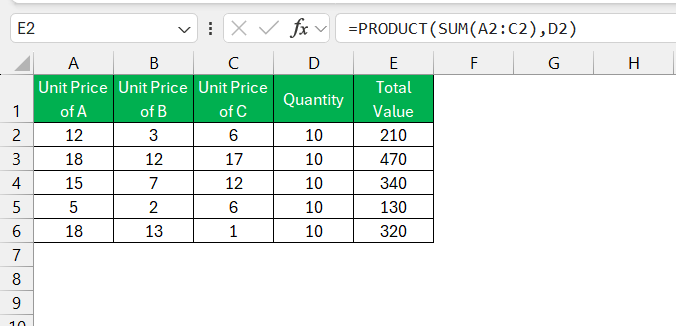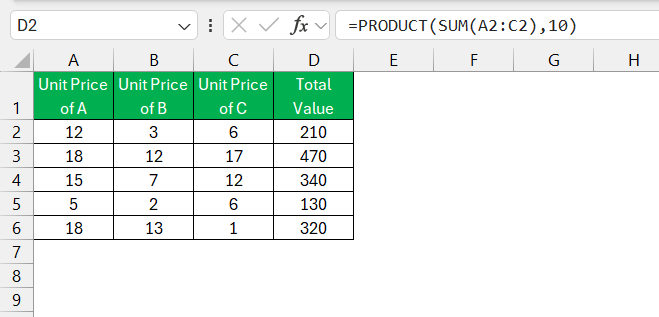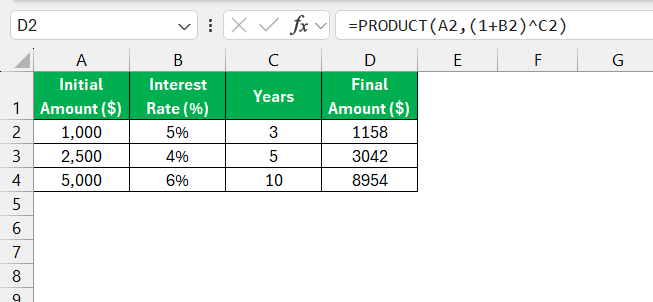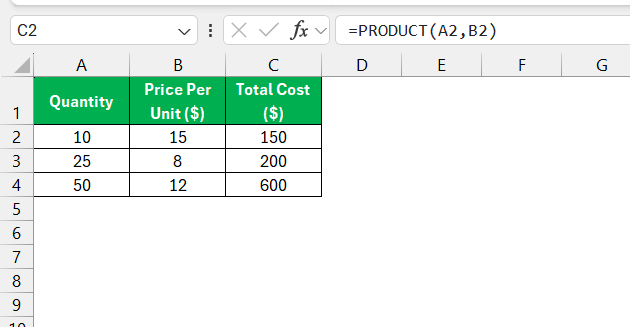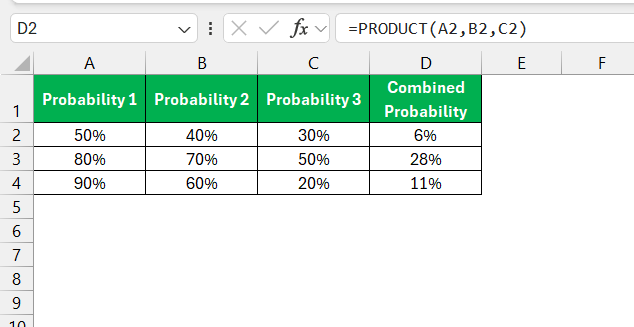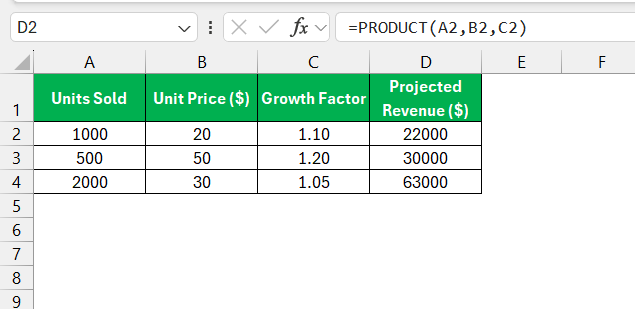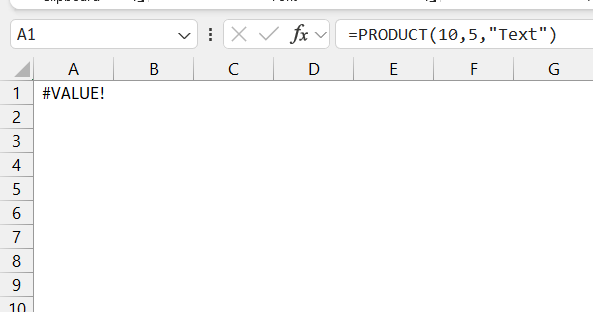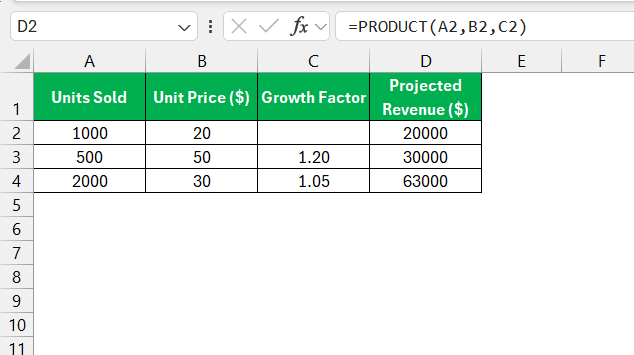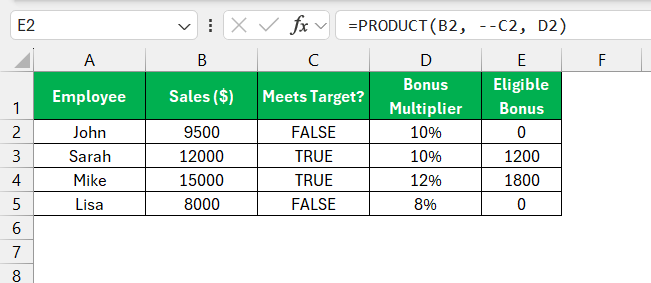As someone who regularly works with Excel, I often find myself needing to perform calculations involving multiple numbers. One of the most useful functions for this purpose is the PRODUCT function. In this article, I’ll walk you through how to use the PRODUCT function effectively and explore some real-world applications.
Key Takeaways:
- The PRODUCT function multiplies numbers and cell ranges efficiently.
- It can handle up to 255 arguments, including individual numbers and ranges.
- Combining PRODUCT with other functions like SUM enhances its utility.
- Common use cases include financial calculations, probability analysis, and bulk purchase cost estimation.
- Understanding common errors helps in troubleshooting unexpected results.
Table of Contents
What is the PRODUCT Function?
The PRODUCT function in Excel is designed to multiply numbers together. It is particularly useful when working with large datasets where manual multiplication would be inefficient. This function is especially beneficial for scenarios where values are stored in different cells, and you need to compute their total product efficiently.
Syntax: =PRODUCT(number1, [number2], …)
- number1, number2, … – These are the numbers or cell references that you want to multiply. You can include up to 255 arguments.
How to Use the PRODUCT Function
Basic Usage
Let’s start with a simple example. Suppose I have the following numbers:
If I want to multiply these numbers together, I can use:
=PRODUCT(A2, B2, C2)
This formula will return 216 (12 × 3 × 6).
Using PRODUCT with a Range
Instead of specifying each cell individually, I can simplify the formula by using a range:
=PRODUCT(A2:C2)
This formula will yield the same result: 216. Using ranges improves readability and efficiency, especially in large datasets.
Multiplying a Mix of Numbers and Ranges
The PRODUCT function allows for a combination of individual numbers and ranges:
=PRODUCT(A2:C2, 5, 10)
This multiplies all values in the range A2:C2 by 5 and 10.
Combining PRODUCT with Other Functions
The PRODUCT function works well when combined with other Excel functions. For instance:
Multiplying with a SUM function:
=PRODUCT(SUM(A2:C2), D2)
This formula first sums the values in A2:C2, then multiplies the result by D2.
Multiplying a Constant Value:
=PRODUCT(A2:C2, 10)
This multiplies the values in A2:C2 by 10.
Practical Applications
Calculating Compound Interest
If I want to calculate compound interest where the interest is applied annually, I can use the PRODUCT function:
=PRODUCT(Initial_Amount, (1 + Interest_Rate)^Years)
This helps me quickly determine the final amount after compounding. Instead of manually calculating multiple years of interest, this formula automates the process.
Finding the Total Cost of Bulk Purchases
If I have different quantities of products and their respective prices, I can use the PRODUCT function to calculate the total cost.
=PRODUCT(Quantity, Price_Per_Unit)
This formula ensures accurate cost calculations for bulk purchases.
Probability Calculations
When dealing with probability, I often need to find the probability of multiple independent events occurring. The PRODUCT function makes it simple:
=PRODUCT(Probability1, Probability2, Probability3)
Since independent probabilities are multiplied, this function is extremely useful in statistics.
Financial Calculations
In business scenarios, I often use PRODUCT to compute revenue projections. For example:
=PRODUCT(Units_Sold, Unit_Price, Growth_Factor)
This formula helps estimate future revenues by incorporating sales growth rates.
Common Errors and Troubleshooting
- #VALUE! Error – This occurs if I mistakenly include a text value in the function. Ensuring all values are numbers prevents this issue.
- Multiplying Empty Cells – If a referenced cell is empty, Excel treats it as 1. This usually isn’t a problem, but it’s good to be aware of when dealing with data.
- Incorrect Cell References – If I accidentally reference incorrect or blank cells, the PRODUCT function may return unexpected results. Double-checking cell references ensures accuracy.
- Handling Zero Values – Since multiplication by zero results in zero, ensure that no unnecessary zeros exist in the dataset.
- Using PRODUCT with Boolean Values – If you include TRUE/FALSE values, Excel ignores them. To convert them into numbers, use the double negative (–) before cell references.
Conclusion
The PRODUCT function in Excel is a powerful tool for performing multiplication across large datasets efficiently. Whether you’re calculating compound interest, estimating bulk purchase costs, or working with probabilities, this function simplifies complex multiplication tasks. By understanding its syntax, applications, and common errors, you can enhance your Excel skills and improve your workflow.
FAQs
1. Can the PRODUCT function handle negative numbers?
Yes, the PRODUCT function can handle negative numbers without any issues. It follows the standard mathematical rules of multiplication, meaning that multiplying two negative numbers results in a positive number. For example, =PRODUCT(-2, -3, 4) will return 24, while =PRODUCT(-2, 3, 4) will return -24.
2. How does PRODUCT handle empty cells?
The PRODUCT function treats empty cells as 1, meaning they do not affect the result. If your dataset has missing values and you want to exclude them, consider using IF or FILTER functions to control how the calculation is performed. For example, you could use =PRODUCT(FILTER(A1:A10, A1:A10<>””)) to multiply only non-empty cells.
3. Can I use PRODUCT with logical values (TRUE/FALSE)?
By default, the PRODUCT function ignores logical values unless they are explicitly converted to numbers. In Excel, TRUE is equivalent to 1, and FALSE is equivalent to 0, but PRODUCT does not count them unless converted. To include them, you can use a double negative (–) like =PRODUCT(–A1, –B1, –C1), which forces Excel to treat them as numeric values.
4. What is the difference between PRODUCT and multiplication (*)?
The * operator requires you to manually specify each value or reference (e.g., =A1*B1*C1), which can be tedious for large ranges. The PRODUCT function, on the other hand, can handle entire ranges at once (e.g., =PRODUCT(A1:C1)), making it more efficient for multiplying multiple numbers. This flexibility makes PRODUCT especially useful when dealing with variable-length datasets.
5. Can I use PRODUCT with arrays?
Yes, the PRODUCT function supports arrays, particularly in dynamic array formulas available in Microsoft 365. When used with arrays, PRODUCT multiplies corresponding elements. For instance, =PRODUCT(A1:A5 * B1:B5) calculates the element-wise product of the two arrays before returning the final multiplication result. However, if you’re using an older version of Excel, you may need to enter the formula as an array formula using Ctrl + Shift + Enter.
John Michaloudis is a former accountant and finance analyst at General Electric, a Microsoft MVP since 2020, an Amazon #1 bestselling author of 4 Microsoft Excel books and teacher of Microsoft Excel & Office over at his flagship MyExcelOnline Academy Online Course.

